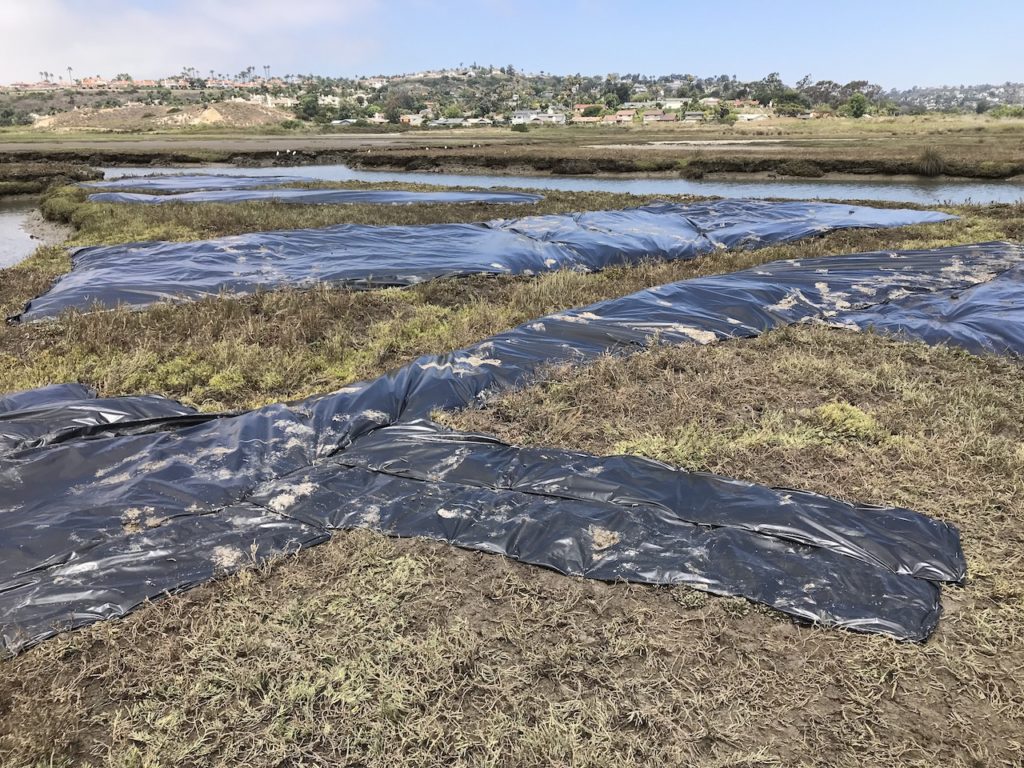Cardiff Living Shoreline
Follow ( 0 Followers ) X Follow E-mail : * Follow Unfollow

Agua Hedionda Lagoon Ecological Reserve lies just north of San Elijo Lagoon in Carlsbad. The 186-acre lagoon consists of salt marsh and mudflat habitats. It is home to endangered plants and wildlife, and is part of the wetland corridor providing important resting and refueling areas for birds flying along the Pacific Flyway. Healthy marshes are part of the natural infrastructure protecting our communities from storm surges and sea level rise.
But an invasive plant is disrupting these natural ecosystem services, and homes for native plants and animals, if left unchecked. Nature Collective is partnering with the Agua Hedionda Lagoon Foundation this fall to eradicate Algerian sea lavender (Limonium rasosissimum).
Above: Our ‘2-lagoon’ Solarization Experiment Team!
Above: Areas dominated by Algerian sea lavender in the Agua Hedionda Lagoon are shown in red.
This plant is an ornamental escape originally from the Mediterranean that likely came from the nursery industry. Yes, it is pretty and purple when flowering. But it’s not pretty to watch a natural landscape lose balance for just one plant.
Above: Working collectively: staff, volunteers and interns from both organizations waded into a medium-to-high intertidal area and spread out with large black solarization tarps.

How fast does sea lavender grow? The seeds can retain the ability to germinate after two weeks floating in salt water.
We improve habitats for nature, and for you.
The land was acquired to protect salt marsh habitats. It was designated as an ecological reserve by the U.S. Fish & Wildlife Service in 2002.
Thank you for following our Nature Collective blog.